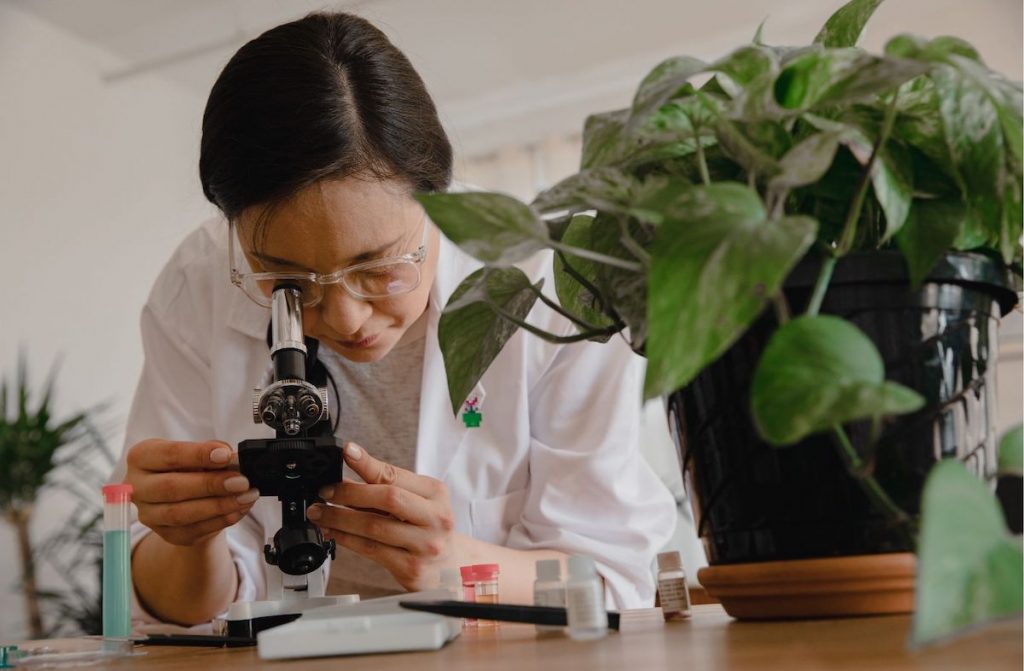Science has shaped many aspects of our modern lifestyle, from technological devices to health care. Science’s power comes from its systemic method of gathering knowledge and information.
Pseudoscience and junk science can be hard to distinguish from real science. Pseudoscience is fake science, like homeopathy, astrology, and creation science. Junk science is bad science. This happens when scientists make dramatic claims from preliminary or fraudulent data.
Considering that information shapes our decisions, from what we buy to how we vote, how do you discern the real from the fake and the junk?
The aim here is to give you some guidance so you don’t wind up getting misled by phony sources like influencers, agenda-driven media outlets, and just plain frauds.
What is (real) science?
Real science uses empirical evidence to explain natural phenomena.
“Empirical” means it’s based on observation or experience, rather than theory or opinion. Therefore, real science can be seen or measured in some way. It’s about as real as you can get.
The Science Council, a registered nonprofit, defines science as “the pursuit and application of knowledge and understanding of the natural and social world following a systematic methodology based on evidence.”
NASA notes that “a scientist will test [an] idea in the real world” using the scientific method. A scientist isn’t just satisfied with something that “seems” or “feels” right. That’s not enough. They set out to prove it to the extent that we can prove anything. And they have a way of doing this.

It starts with a question, followed by evidence-gathering
Empirical evidence is gathered using the scientific method. The scientific method starts with a hypothesis (an idea or prediction) and a research question. After researching previous work done in the field, an experiment is set up to test the question.
In an experimental setup, there’s usually a sufficient sample size (you can’t use just one individual or one incident to prove a hypothesis) and a control group for comparison. The experimental group will receive treatment A, while the control group won’t.
If all the individuals who received A experienced B, then you can scientifically draw the conclusion that A causes B.
If the original idea is sufficiently proven, it becomes a “theory.”
It can (and sometimes should) be disproven
Science is empirical, so this means that it can also be disproven.
If new evidence disproves an old theory in favor of a more suitable theory, then the old theory is put aside. This is a strength because it means that science is always improving. The old theory still may be a reference, and it may be re-explored, but a better way has now been found.
The scientific method is, in this way, a self-correcting system.
Everybody makes mistakes. But the advantage of real science is that if someone makes a mistake or something seems like it might be a mistake, someone else will soon pick it up and try to correct it.
When a researcher submits a scientific paper for publication in a scientific journal, the submission goes through a process called peer review.
In this process, other scientists in the same or similar fields carefully scrutinize it before it is accepted and published.
An unclear hypothesis, flawed methods, and even poor writing are among the many reasons for rejection. Peer review is the gold standard; it’s like a trial for science. It’s not perfect, but it’s powerful. It also comes after the scientist’s own rigorous research, and possibly after other feedback as well.
Science published in a peer-reviewed journal is therefore seen as credible.
It’s the sum effect of validated knowledge
But “science” doesn’t consist of one article. All the articles and other literature about a specific topic make up the current scientific knowledge on that topic.
Review articles analyze and summarize all the most recent papers on a specific topic. These articles represent the viewpoints of different scientists in the field. So they represent a much more accurate view of scientific knowledge than a single research paper.
Examples of such review documents include the Intergovernmental Panel on Climate Change reports, which were written, edited, and reviewed by hundreds of scientists from all over the world. They’re reviewed every few years and a new version is released. Another example is the latest review paper on the efficacy and safety of COVID-19 vaccines.
Such reviews, being strong analyses of other analyses, are often considered the strongest form of evidence.
How can I tell if it’s real science?
Check the source
Reliable sources include scientific publications, websites of universities, government, or research entities, for example, the World Health Organization. The personal blog of someone who claims to have a PhD is probably not a reliable source. And never trust anyone who’s trying to sell you something.
Check the date
Since science changes all the time, it’s important to make sure that you have the most up-to-date information. Old science often makes up the basis of many pseudoscience movements.
Check the facts
Often, a quick google search can bring clarity. For example, if you Google the phrase “Is ozone good for you”, all the top results say that ozone can be harmful to your health. The first result is from the United States Environmental Protection Agency (EPA). They cite academic articles where healthcare scientists have done experimental studies and found that even small amounts can be harmful.
Don’t waste your money on that ozone generator. In the best-case scenario, you’ll be wasting your money. In the worst-case scenario, you can get very ill.
Use resources
To find scientific literature, use Google Scholar. Open access articles are available for public reading by anyone. Many others, however, need a paid subscription in order to view them.
The highly lucrative scientific publishing industry is a topic for elsewhere, but enrolled students, professors, and librarians can typically access these articles. There are also “other ways” we can’t mention here. Many, including us, advocate for open science. And we encourage you to educate yourself.
What is pseudoscience?
Pseudoscience, as the name suggests, looks like science, but is not. Pseudoscientists only use evidence that supports their theory and dismisses other evidence as invalid or fake.
It uses old information
They often use very old sources, for example, the Flat Earth Society lists literature from the 1800s and 1900s to support its theory that the Earth is flat and not round.
It’s round. The Earth is round.
While real science changes and improves all the time, pseudoscience tends to stay the same for decades.
It doesn’t use empirical evidence
Pseudoscientists prefer to disprove other theories, without ever using empirical evidence to prove their own theories. For example, most of the arguments for creationism are statements against Darwin’s theory of evolution, with no empirical evidence that creationism is the more likely explanation.
Instead, they cite the Bible as the source of ultimate truth. Faith and belief aren’t seen as empirical. In science, there’s no authority that’s above scrutiny.
It employs science denialism and conspiracy theories
Pseudoscience often goes together with science denialism: Even after scientific studies have disproven their theories, support for the movement still holds.
As such, pseudoscience often goes hand in hand with conspiracy theories.
For example, many creationists believe the thousands of fossils supporting the theory of evolution are all fakes, made by scientists to mislead the masses into abandoning their faith.
How can I tell if it’s pseudoscience?
You can apply a number of questions to determine if something’s pseudoscience.
Did they follow the scientific method?
Did they come to their conclusion because they did an experiment, or because they relied on some form of authority?
Do they use logic or emotions to form their argument?
Be very careful of people trying to manipulate your emotions. Scientific arguments are based on rational, subjective facts and observations. If you remove the emotional appeal of an argument, would the argument still stand?
Are there any political or commercial agendas?
Never get your information from anyone who is trying to sell you something. Just because something is labeled as “healthy” does not necessarily mean that it’s good for you.
Rather, look for standardized things, like the approval of the American Heart Association (when it comes to food products) or the FDA (when taking medicines or supplements).
Ask for numbers
If they’re talking about “energies”, such as in crystal healing or feng shui, that can’t be detected or measured, it’s pseudoscience.
Then, once you have the numbers, compare them.
Gurus, influencers, and washed-up sitcom actors and actresses commonly tout all sorts of “secret” or “traditional” or “alternative” treatments. They rely on their personality as a form of evidence. They lack numbers.

The next time you see that health food or that diet drink at the supermarket, look at the nutritional information.
- Does the “fitness bar” have fewer calories than a Mars bar?
- Just because it touts 20 grams of protein, does that benefit offset the amount of sugar and all the additives?
- Is that much protein even beneficial for a non-athlete? (Real science says it’s probably unnecessary.)
What is junk science?
While pseudoscience is not science at all, junk science is badly done science. This happens in cases such as when scientists make far-fetched conclusions from inconclusive or fraudulent data.
Usually, other scientists detect junk science during the peer review process and most such articles won’t be published or will be corrected before they’re published. Occasionally, though, errors slip through and get published.
Eventually, someone in the scientific community will pick this up. In this case, the journal will publish an updated correction, or, in extreme cases, the paper will be retracted. Paper retractions are never done lightly and sometimes they mark the end of a researcher’s career. That’s a rather big deal. For this reason, never trust anything from a retracted article.
The anti-vaccine movement
The anti-vaccine movement began with a single publication in 1998, from a study on 12 children claiming that vaccines caused their autism. The paper has since been retracted and many recent studies (such as the 2013 study containing more than 1,000 children and the 2004 Immunization Safety Review) with larger sample sizes have found no link between vaccines and autism.
The Piltdown man hoax
Another famous example of junk science is the Piltdown man hoax. In 1912, Charles Dawson and Arthur Smith Woodward presented a fossil finding as “the missing link” between human and ape evolution. Years later, rigorous tests revealed that the fossil was really bones from an orangutan and a human, stained to look like a fossil.
How can I tell if it’s junk or real?
The Food and Nutrition Science Alliance (FANSA) published guidelines on how to tell if science is reliable.
- Who conducted the research? Was the research conducted by a qualified researcher at a credible institution? Be very wary of sources that can’t answer this question.
- Are the results preliminary, or have other studies come to similar conclusions? It might seem very exciting to cite breakthrough research, but you should not trust any article that stands by itself.
- Was the study conducted on humans or animals? Animal studies could show promising possibilities for human treatments, but there are many physiological differences between humans and animals. Before a drug gets approved by the FDA, a series of animal and human trials need to be conducted. A team of scientists then reviews the results from these studies to confirm that the benefits outweigh the risks of the treatment. Until a treatment has been proven safe and effective in humans, it’s not scientifically proven.
- What was the sample size of the study and how long did the study last? Did they look at short-term or long-term benefits?
- Who funded the study? For example, did the manufacturers of the product conduct or pay for the study, or was the study done independently?
- Was the paper peer-reviewed? To answer this question, go to the webpage of the journal where the paper was published. It will explain its peer-review process on its website.
- How do the results of the paper fit in its field? Do all other papers agree with these results? Or do some still refute it? Sometimes different scientific studies find contradictory results. This often means that we do not fully understand the topic yet, so it’s better to wait for clarity before you get too excited about it.
- Beware of dramatic statements and “miracle cures.” If it sounds too good to be true, it probably is.
What about fake science?
Fake science is the same as pseudoscience and the term is often used interchangeably. It claims to be science but does not follow the scientific method. Further examples not mentioned in this article include numerology, reflexology, and detoxification.
Perhaps the real issue is communication
A big problem with science is that it’s so darn scientific. It has its own terms. It’s complex. It’s hard to access. This works against science in a time when so many people are so distrustful of authority.
Science is seen as elitist. All these smart people telling us what’s right and wrong. They’re just people, too, right? What makes them so special? They’re trying to control us!

Science, and academia, throughout history, have been the targets of distrust and anger. Part of this results from the continual questioning nature of science. Scientists themselves bear part of the blame. Many scientists can’t communicate their science in “plain” language that people can understand.
That’s what we try to do here at Scize. If you want to sell a scientific product or an idea, you often need to be clear and understandable to people other than scientists. We start with understanding the science. Then we learn the audience (or the desired audience). And take a, yes, scientific approach to communicating your science. This can bring business or donations or leads. Whatever you’re after. Contact us if this is what you’re after.
Above all, we urge you to think for yourself. This doesn’t mean going with your “gut.” It means using the available resources to make an informed decision.

